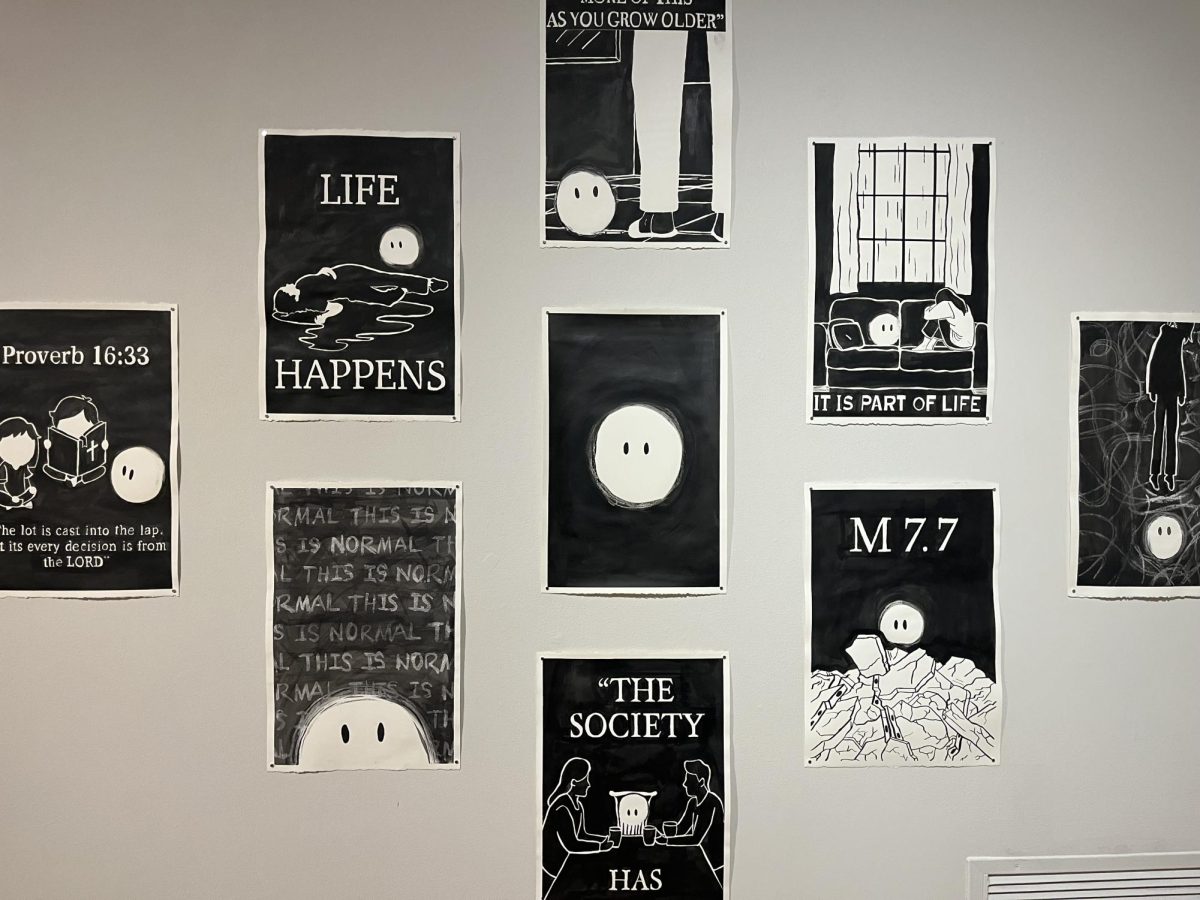When productivity and production are held above all else, how are the lines between work and play drawn? Where does a worker end and a free-willed human begin?
These questions surrounding work-life balance are turned on their head in the Apple TV series “Severance,” starring Adam Scott and produced by Ben Stiller. The first season, which wrapped up with the release of the ninth episode on April 8, is prime binging material for a college of burnt-out students.
Across its roughly eight and a half hours of runtime, the first season of “Severance” crafts a compelling and sinister tale of futuristic exploitation. A workplace show with a twist, it follows cubicle worker Mark Scout after the sudden layoff of his manager and addition of a rebellious coworker. Events soon prompt Mark to unravel the mysteries within the gray areas of his shady office. The series acts as both a microscope on workplace mundanity and an eye opening thriller; think “the Office “crossed with “the Matrix,” minus the full blown comedy hijinks and over-the-top kung fu.
But to truly dig into what gives the show extra juice, you have to spoil the first episode. The spoiler comes early into the pilot and sets the plot off and running, but the vast majority of surprises are left untouched by this review.
The story within “Severance” revolves around the process that gives the series its name. “Severance” is a procedure that places a chip in the brain of a mega-corporation’s employees, separating their real selves from their work personas. At work, “innie” versions of workers lack memories and knowledge of their outside lives, while “outies” avoid the pain or monotony of labor by simply waking up after an eight hour shift.
What could go wrong by splitting work and play? Everything, it seems. Innies far from thrive, within a waking existence consisting solely of labor, and outies seem unable to satiété the demons that led them to unplug their brains for a third of each day.
This anti-capitalist allegory seems as if it could be wrapped up into a powerful short story, but as the thriller barrels ahead new elements and revelations about the inner workings of Lumon Industries, the shadowy corporation behind severance, prove the show has the legs to last a not just an eight hour shift, but well into a multi-season career.
Drawing on clean visual aesthetics and powerful performances, the show should entice most potential consumers. Scott acts as a solid helmsman both in and out of the office, showing off his dramatic chops while vets like John Turturro and Christopher Walken add synergy to the group. Lesser known actors stand out as well like Zach Cherry, who adds an unexpected jab of comedy to the office as a perennial employee of the quarter and Tramell Tillman, who balances blinding smiles and serious villany as a helicopter supervisor.
The show can be eye-candy, off-putting, funny, thrilling, and thought-provoking, and when at its best combines all those cogs mesh together. Though the show drags at times, and perhaps rushes one office romance, enduring questions and cliffhangers at the end of each episode stoke the desire to clock in again.
In college, where students grind away at their studies to prepare them for possible life-long careers, it’s easy to lose sight of the larger picture while caught in the daily milieu. As this show can attest, compartmentalizing labor and living is not sustainable or healthy. It seems one cannot live without work but should not live for work either. A work-life balance may not be the right way to describe it, but some sort of holistic re-evaluation of ourselves, our goals, and our work systems seem to be necessary. There are no clear solutions to these questions, but luckily no defined deadlines either. In the meantime, at least the end of semester grind can distract from the wait for “Severance” season 2.
4 out of 5 Big Oles




